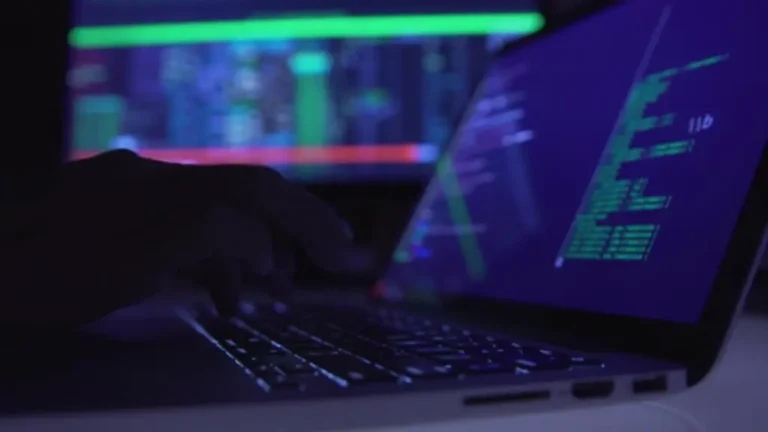Mastering Exception Dealing With In Spring Boot: A Comprehensive Guide Medium
This re-raised exception propagates to a better degree of code execution, permitting it to be caught by an outer exception handler if current. The returned worth of a try expression is decided by the final executed expression in either the strive or catch block. If no exceptions occur, the outcome comes from the attempt block; if an exception is handled https://www.globalcloudteam.com/, it comes from the catch block. The lastly block is at all times executed, however it would not change the end result of the try-catch block. You can add as many catch blocks as wanted to deal with completely different exceptions distinctively.
Java Exception Dealing With: Common Terminology

Distinguishing between errors and failures (i.e. thrown Exceptions handled by way of the ExceptionHandlerExceptionHandler) offers a much better psychological model but additionally results in efficiency enhancements. Since an ExceptionHandlerExceptionHandler is a partial function, it could possibly choose which exceptions it would like to exception handling handle and which not. Unhandled exceptions will simply continue to bubble up within the route construction.

Hierarchy Of Java Exception Classes
With the lastly block you can clear up code after the execution of attempt to catch blocks. This is especially important when working with assets like files or network connections, as finally ensures they’re properly closed or launched. If a detecting perform in a block of code can not deal with an anomaly, the exception is thrown to a function that can deal with the exception. A catch assertion is a bunch of statements that deal with the precise thrown exception.
What Are The Forms Of Exceptions?

Error Handling refers to how Express catches and processes errors thatoccur both synchronously and asynchronously. Express comes with a default errorhandler so that you don’t need to write down your own to get began. In the code above, the CustomException class is outlined, inheriting from the bottom Exception class. It has an extra attribute, error_code, which is set to 1001 in the constructor (__init__ method). The super().__init__(message) name initializes the bottom Exception class with the given error message.
Examples Of Exception Dealing With In C++
This is particularly helpful when dealing with asynchronous or parallel code where a quantity of exceptions can occur concurrently. The E extends Exception constraint is beneficial if we need to only symbolize exceptions of type Exception or a subclass of it (which is the conference followed by all Flutter core libraries). And if we now have a big codebase, it can be even more durable to figure out which features may throw and which don’t. In truth, the one approach to discover out if the operate throws is to learn its documentation and implementation. But if the request fails (for example, if the IP tackle is invalid or the API is down), we throw an exception. The user might enter an incorrect input, a community request could fail, or we could have made a programmer mistake someplace, and our app will crash.

A Scenario Where Arrayindexoutofboundsexception Happens
Exceptions are used to deal with errors, surprising circumstances, or different exceptional occasions that will happen throughout runtime. Java offers a mechanism for dealing with exceptions through the utilization of try-catch blocks. The second scheme, and the one carried out in lots of production-quality C++ compilers and 64-bit Microsoft SEH, is a table-driven approach.
- You can implement the report method on the exception class to self-handle the exception reporting.
- By integrating an error-monitoring service into the event workflow, teams can enhance their debugging and troubleshooting capabilities, leading to improved consumer expertise and overall software high quality.
- It is feasible to customise the default habits of printing uncaught exceptions to the console.
- All objects thrown by the elements of the usual library are derived from this class.
The Means To Use The Try-catch Clause?
If the verify fails, it signifies a logic error that must be addressed. Logging ExceptionsLogging exceptions is essential for debugging and monitoring. Spring Boot provides integration with popular logging frameworks like Log4j and SLF4J. To customise the exception reporting for a given exception, you may additionally make the most of reportable exceptions. Please examine the exceptions reference information to view the record of known errors.

The strategy of dealing with these exceptions is identified as exception handling. Using the exception handling mechanism, the control from one a part of the program where the exception occurred can be transferred to another part of the code. It follows that asynchronous exception dealing with cannot be optimized out by the compiler, as it can not show the absence of asynchronous exceptions. They are also troublesome to program with appropriately, as asynchronous exceptions have to be blocked throughout cleanup operations to keep away from resource leaks.
The rest of the line provides element based mostly on the sort of exception and whatcaused it. An instance is the ENDPAGE condition in PL/I; the ON unit would possibly write web page trailer lines and header lines for the next web page, then fall by way of to resume execution of the interrupted code. If send_fast fails, the physique (do clause) shall be executed again, inflicting execution of send_slow. If this execution of send_slow fails, the rescue clause will execute to the tip with no retry (no else clause within the ultimate if), causing the routine execution as a whole to fail. It assumes that a routine send_fast is often the better approach to ship a message, but it may fail, triggering an exception; if that is the case, the algorithm next makes use of send_slow, which can fail much less usually. If send_slow fails, the routine ship as a whole ought to fail, inflicting the caller to get an exception.
As we are ready to see from the output, the loop successfully performs the division operation for non-zero numbers and prints the outcomes. When encountering a zero, the ZeroDivisionError is caught, and the error message is printed. The loop continues to execute, handling every iteration gracefully, even within the presence of exceptions.
Catch parameters determine the particular type of exception that’s thrown. That is to say, the question can solely be answered in phrases of the broader goals of the program, which are not known to the general-purpose library function. Nonetheless, exiting with an error message is simply hardly ever the proper answer. The restarts supplied constitute the mechanisms available for recovering from error; the choice of restart by the situation handler supplies the policy. The level of exception dealing with routines is to ensure that the code can handle error conditions.
Leave a reply